Ride Comfort Control System Considering Physiological and Psychological Characteristics: Effect of Masking on Vertical Vibration on Passengers
Abstract
:1. Introduction
2. Masking Method
3. Evaluation of Psychological State Using Heart Rate Variability
4. Experimental Apparatus and Method
4.1. Active Seat Suspension
4.2. Measuring Device and Method of Electrocardiogram
4.3. Experimental Method
5. Vibration Experiment of Single Frequency with Constant Acceleration Amplitude
5.1. Vibration Condition
5.2. Experimental Result
6. Fundamental Study on Superimposed Vibration
6.1. Vibration Condition
6.2. Experimental Result
7. Examination of Ride Comfort Improvement Effect by Masking
7.1. Experimental Conditions
7.2. Experimental Result
8. Conclusions
- (1)
- 5 Hz sinusoidal vibration against superimposing 3 and 10 Hz sinusoidal vibrations with twice the acceleration amplitude by masking results in greater ride comfort than with 5 Hz sinusoidal vibrations which are susceptible to vibration. This was confirmed by the psychological state evaluation index LF/HF obtained from the ECG.
- (2)
- Based on the above section, the effect of masking by sinusoidal vibrations of 3 and 10 Hz with twice the acceleration amplitude in twelve subjects was evaluated from the vibration test, and it was confirmed that the effect of masking varied by subject.
- (3)
- To confirm the physical difference between subjects with different effects of improving riding comfort by masking, the vibration transmission rate of each part of the human body was evaluated from the vibration experiment, but no clear difference was confirmed.
Author Contributions
Funding
Conflicts of Interest
References
- Suzuki, H.; Shiroto, H.; Omino, K. Identification of factors that affect the in-car comfort of a train. J. Rail Rapid Transit 1997, 11, 31. [Google Scholar]
- Kitahara, T. Problems in quantitatively evaluating vibration comfort. J. Auto Eng. Jpn. 1978, 32, 667–674. [Google Scholar]
- Zhou, Y.; Chen, S. Vehicle ride comfort analysis with whole-body vibration on long-span bridges subjected to crosswind. J. Wind Eng. Ind. Aerodyn. 2016, 155, 126–140. [Google Scholar] [CrossRef] [Green Version]
- Smith, D.R.; Andrews, D.M.; Wawrow, P.T. Development and evaluation of the Automotive Seating Discomfort Questionnaire (ASDQ). Int. J. Ind. Ergon. 2006, 36, 141–149. [Google Scholar] [CrossRef]
- Mizuno, Y.; Yokoyama, K.; Okada, A.; Hayano, J.; Takada, K. Comparison of bioburden degree in motorcycle/four-wheeled vehicle long distance operation by electrocardiogram R-R interval. Jpn. J. Med. Elec. Biol. Eng. 1998, 36, 87–93. [Google Scholar]
- Oshinoya, Y.; Arai, H.; Ishibashi, K. Experimental study on active seat suspension for a small vehicle. Int. J. Appl. Electromagn. Mech. 2004, 19, 437–443. [Google Scholar]
- Kato, H.; Hasegawa, S.; Oshinoya, Y. Active Control of Ultra-compact Vehicle Seat. J. Magn. Soc. Jpn. 2013, 37, 95–101. [Google Scholar] [CrossRef]
- Kato, H.; Endo, A.; Mashino, M.; Narita, T. Ride Comfort Control System for Ultra-Compact EV by Estimation State of the Driver (Experimental Consideration on Driver’s HRV by Driving Operation). In Proceedings of the International Conference on Electrical Engineering, Okimawa, Japan, 3 July 2016. [Google Scholar]
- Kato, H.; Ishida, M.; Mashino, M.; Narita, T. Proposal of ride comfort control system by psychological state estimation of the driver. Bull. JSME 2015, 81, 15-00356. [Google Scholar] [CrossRef]
- Kato, H.; Oshinoya, Y.; Hasegawa, S.; Kasuya, H. Ride comfort Evaluation of Active Seat Suspension for Small Vehicles Using Psychology and Physiology—Fundamental Consideration by Analysis Heart Rate Fluctuation and Salivary Amylase Activity. Proc. Sch. Eng. Tokai Univ. 2011, 36, 29–34. [Google Scholar]
- Kobori, T.; Kajikawa, Y. Ergonomic Evaluation Methods for Bridge Vibrations. J. Jpn. Soc. Civ. Eng. 1974, 230, 23–31. [Google Scholar] [CrossRef]
- Mansfield, N.J.; Griffin, M.J. Effect of posture and vibration magnitude on apparent mass and pelvis rotation during exposure to whole-body vertical vibration. J. Sound Vib. 2002, 253, 93–107. [Google Scholar] [CrossRef]
- International Organization for Standardization. Guide for the Evaluation of Human Exposure to Whole-Body Vibration; ISO 2631; ISO: Geneva, Switzerland, 1978. [Google Scholar]
- Janeway, R.N. Human Vibration Tolerance Criteria and Application to Ride Evaluation 750166; SAE Technical Paper; SAE International: Warrendale, PA, USA; Troy, MI, USA, 1975. [Google Scholar]
- Takei, K.; Ishiguro, M. Evaluation of Ride Comfort on the Basis of Subjective Judgement. R&D Rev. Toyota CRDL 1995, 30, 47–56. [Google Scholar]
- Yasunao, M.; Griffin, M.J. A Study on Dynamic Response Characteristics of Human Body upon Vertical Vibration Exposure. Jpn. Soc. Civ. Eng. 2002, 703, 185–201. [Google Scholar]
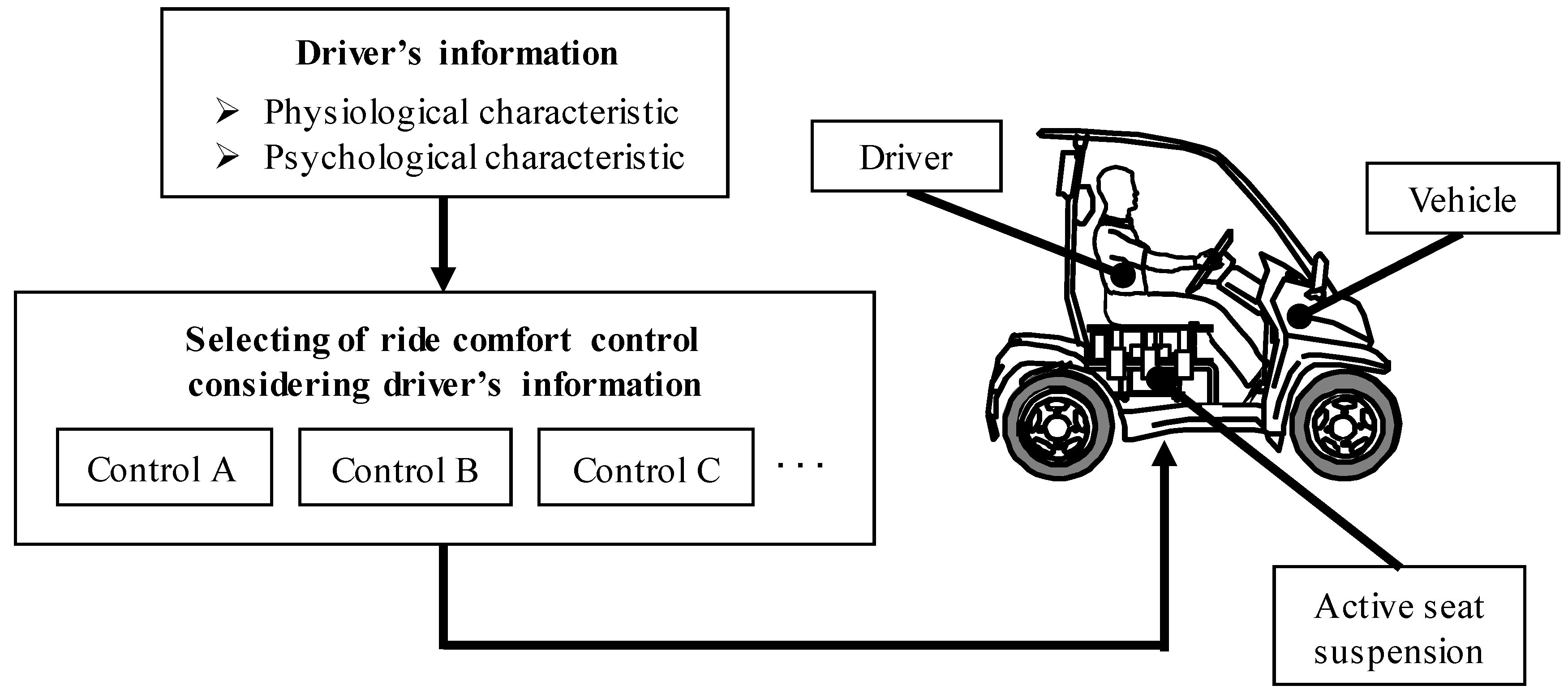

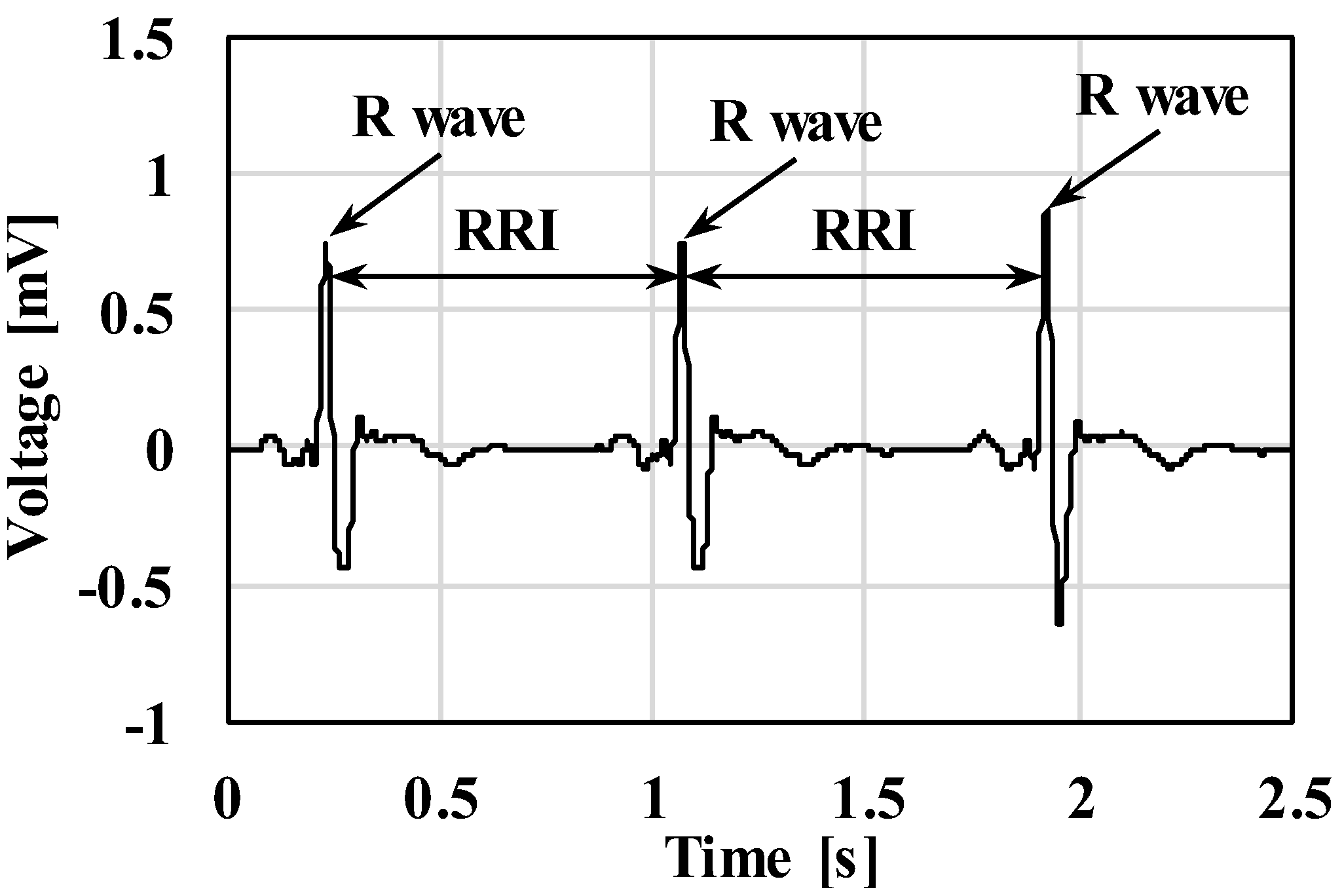

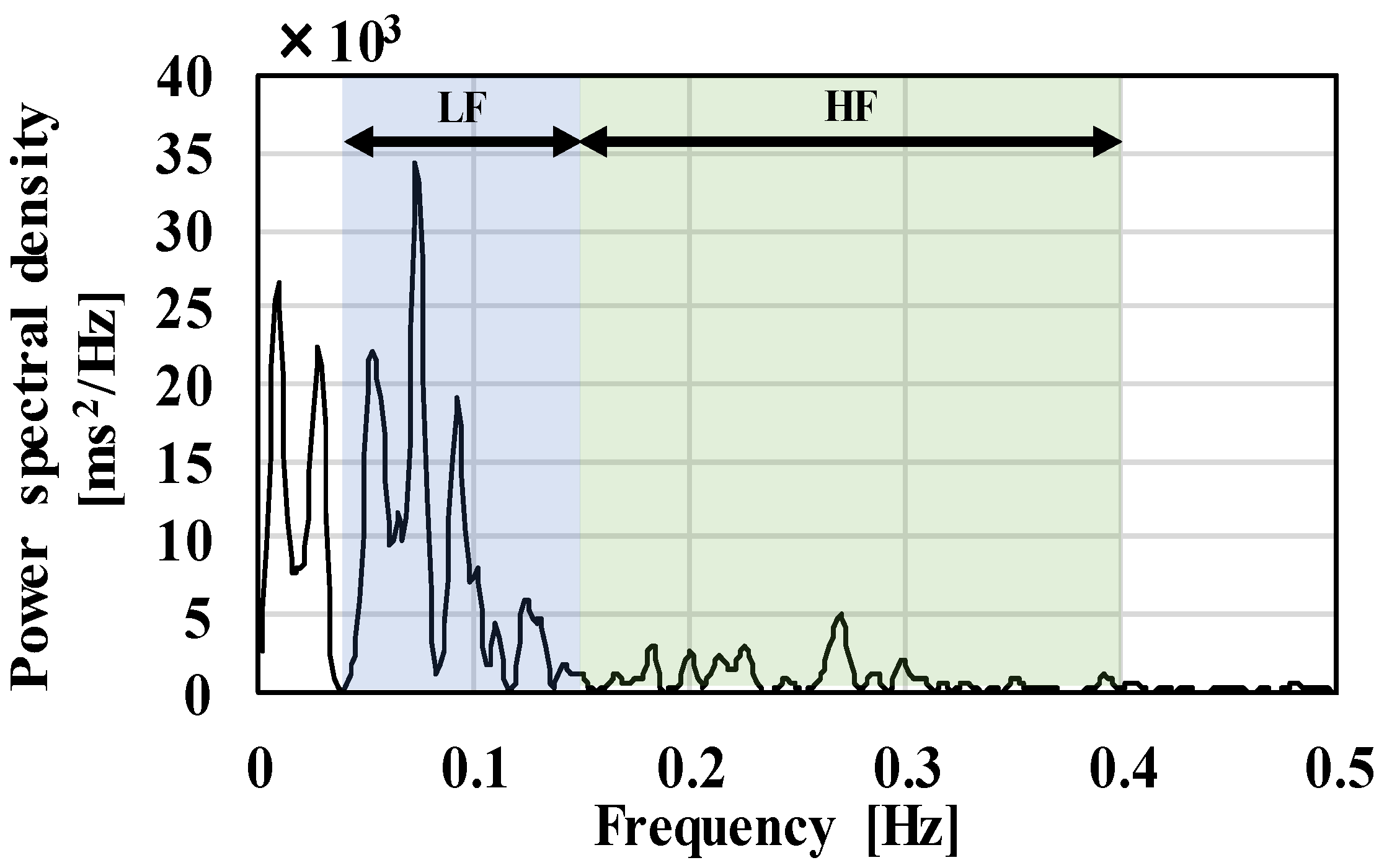
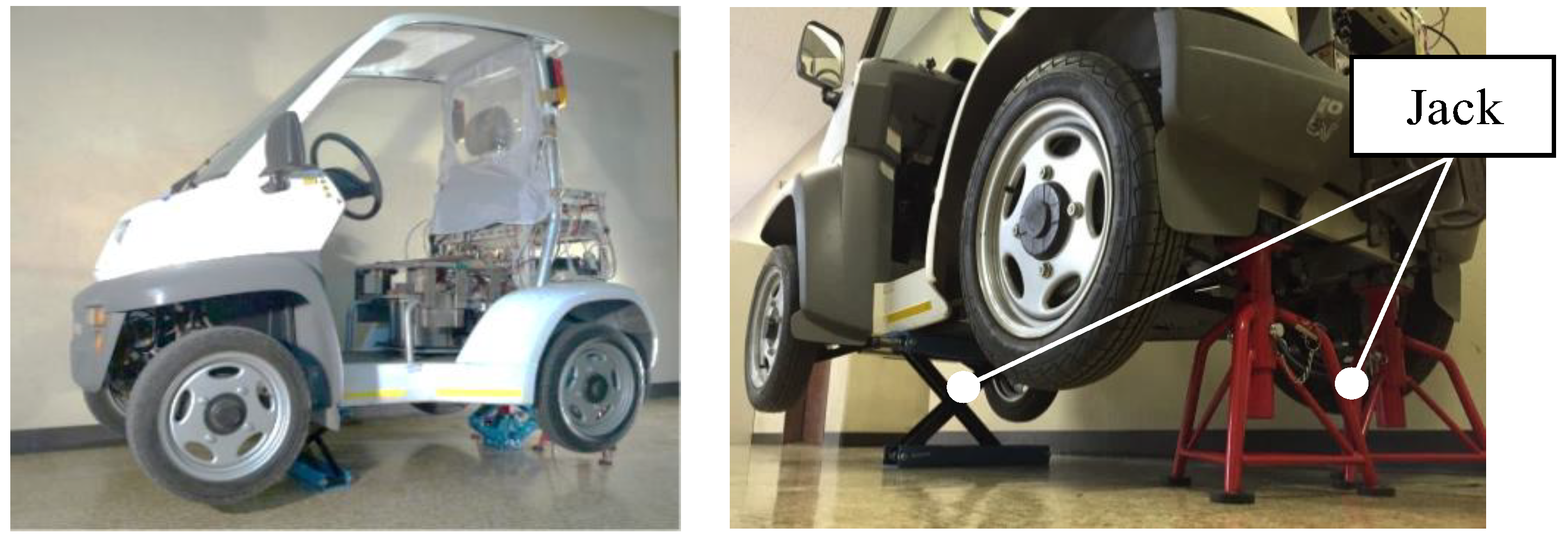


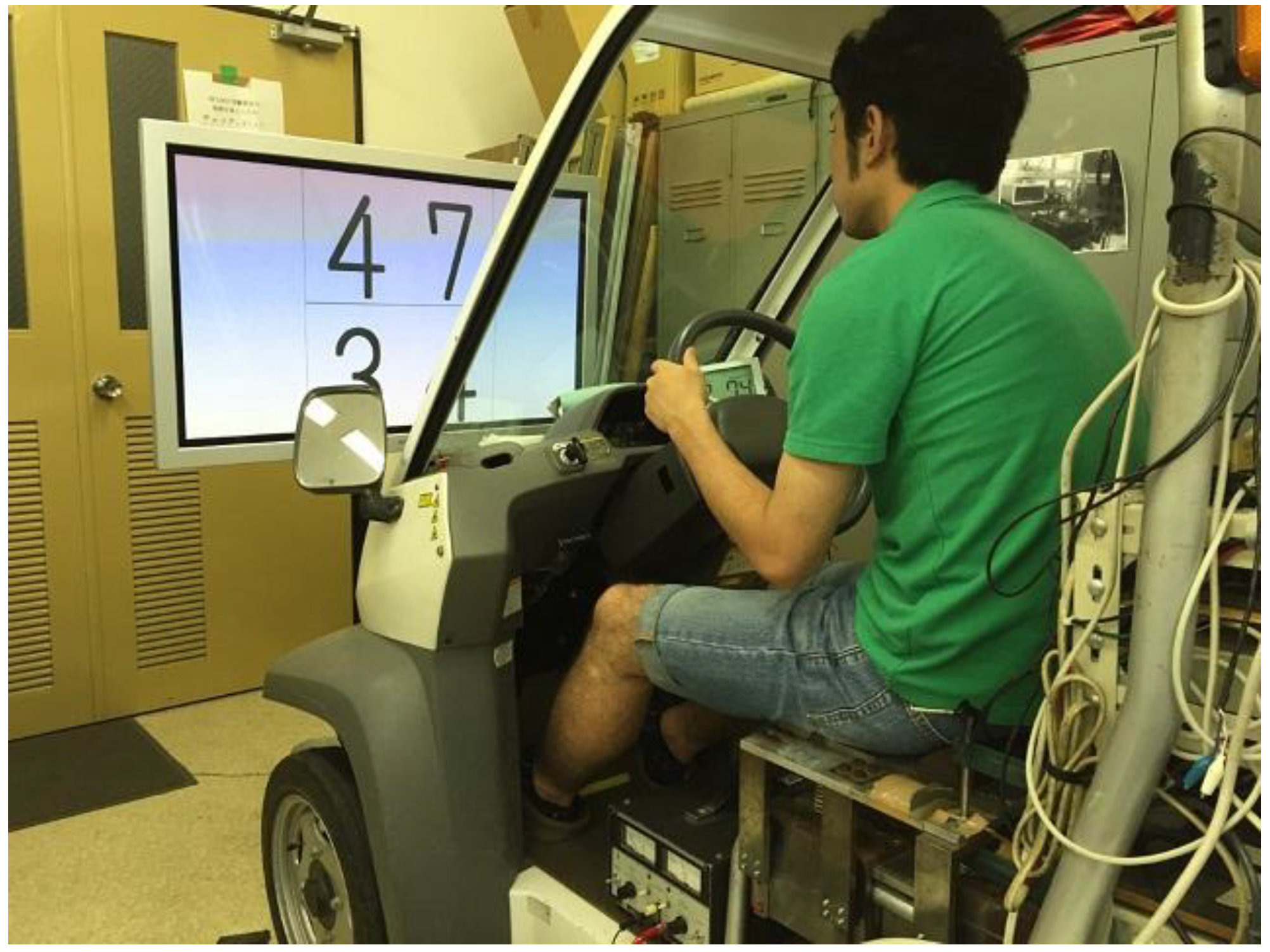
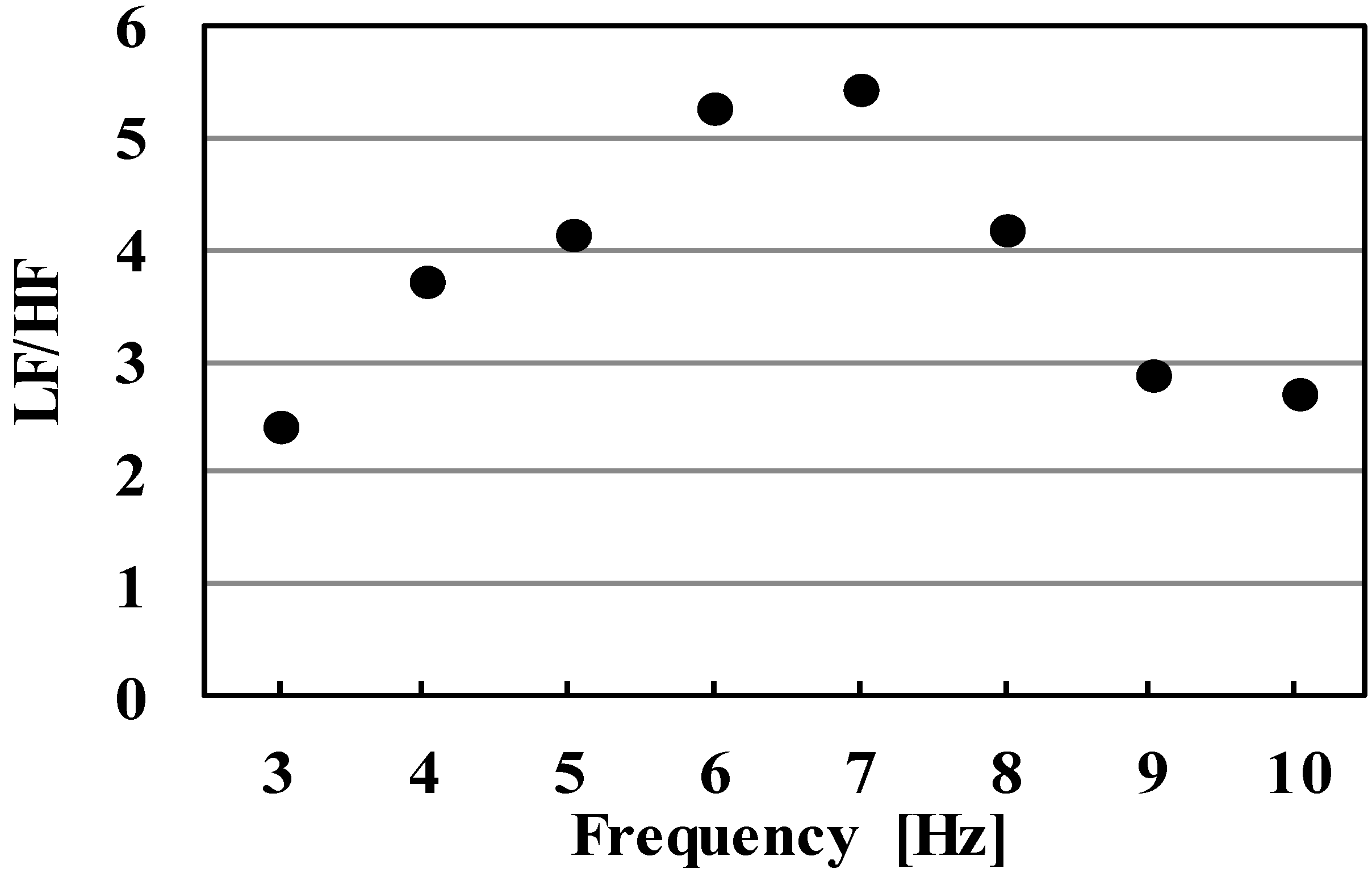
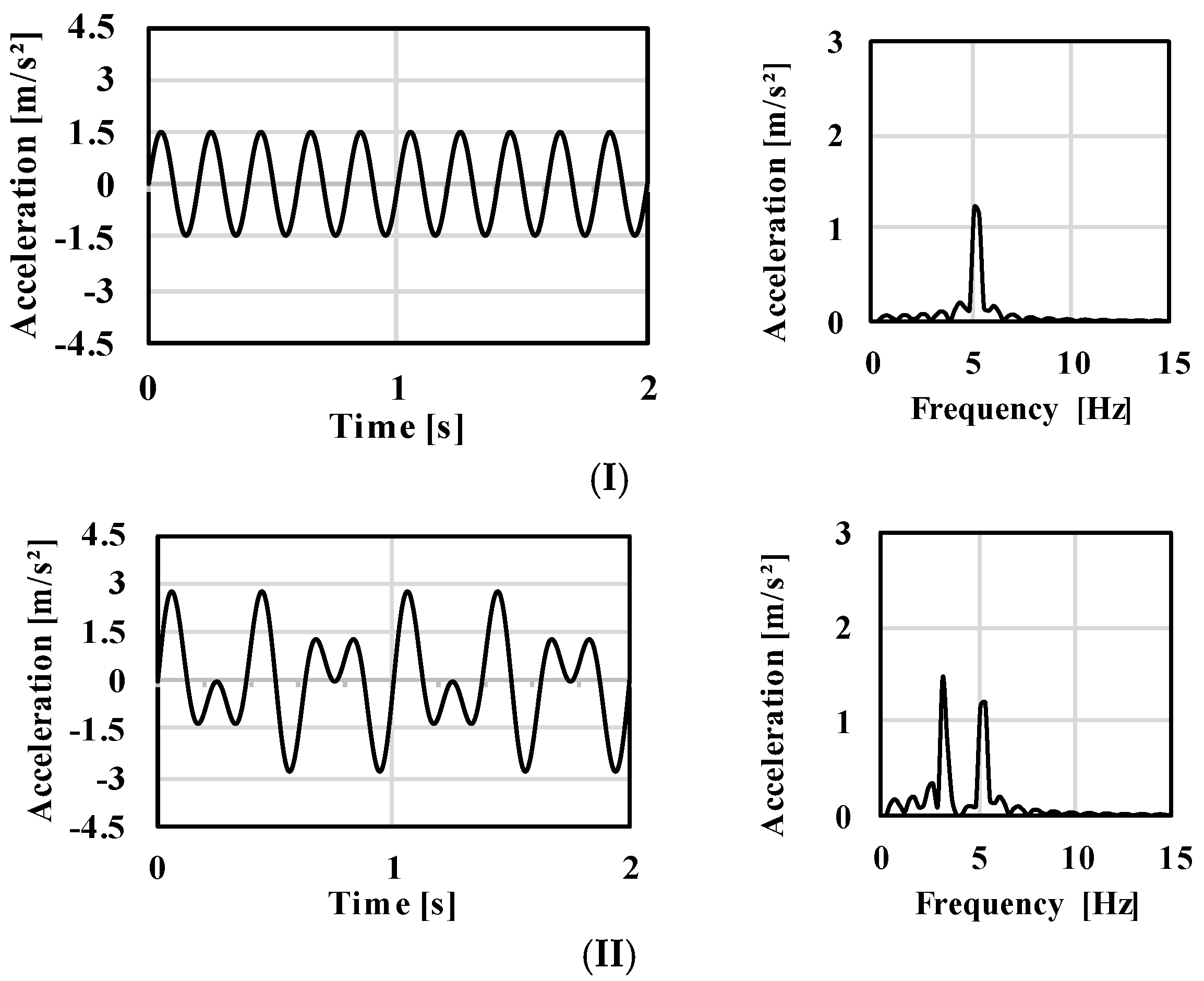



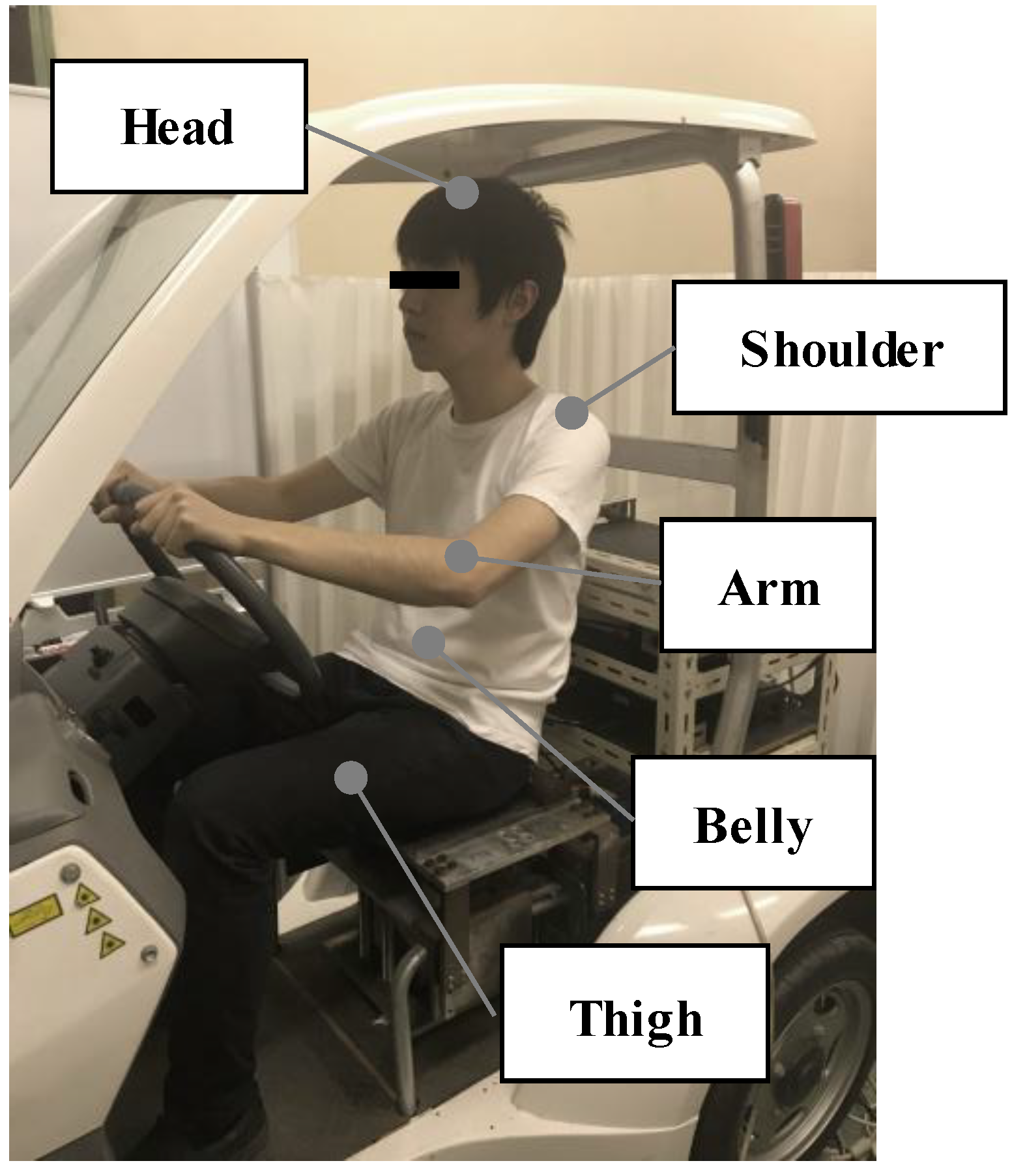
| Case | Vibration 1 (Disturbance) | Vibration 2 (Masker) | ||
|---|---|---|---|---|
| Frequency (Hz) | Amplitude (m/s2) | Frequency (Hz) | Amplitude (m/s2) | |
| I | 5 | 1.5 | ― | ― |
| II | 3 | 1.5 | ||
| III | 3.0 | |||
| IV | 10 | 1.5 | ||
| V | 3.0 | |||
| Subjects | Measurement Points | |||||
|---|---|---|---|---|---|---|
| Head | Shoulder | Arm | Belly | Thigh | ||
| A | Frequency (Hz) | 3.0 | 6.0 | 5.5 | 5.5 | 12.5 |
| Transmissibility ((m/s2)/(m/s2)) | 2.1 | 4.2 | 3.1 | 2.2 | 2.2 | |
| G | Frequency (Hz) | 3.0 | 5.0 | 5.5 | 5.5 | 13.0 |
| Transmissibility ((m/s2)/(m/s2)) | 2.0 | 5.4 | 3.0 | 3.6 | 1.7 | |
© 2018 by the authors. Licensee MDPI, Basel, Switzerland. This article is an open access article distributed under the terms and conditions of the Creative Commons Attribution (CC BY) license (http://creativecommons.org/licenses/by/4.0/).
Share and Cite
Ikeda, K.; Endo, A.; Minowa, R.; Narita, T.; Kato, H. Ride Comfort Control System Considering Physiological and Psychological Characteristics: Effect of Masking on Vertical Vibration on Passengers. Actuators 2018, 7, 42. https://doi.org/10.3390/act7030042
Ikeda K, Endo A, Minowa R, Narita T, Kato H. Ride Comfort Control System Considering Physiological and Psychological Characteristics: Effect of Masking on Vertical Vibration on Passengers. Actuators. 2018; 7(3):42. https://doi.org/10.3390/act7030042
Chicago/Turabian StyleIkeda, Keigo, Ayato Endo, Ryosuke Minowa, Takayoshi Narita, and Hideaki Kato. 2018. "Ride Comfort Control System Considering Physiological and Psychological Characteristics: Effect of Masking on Vertical Vibration on Passengers" Actuators 7, no. 3: 42. https://doi.org/10.3390/act7030042





